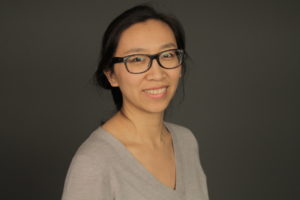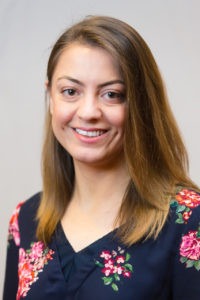
The use of donor sperm to treat infertility has been around for a long time, but oftentimes even the parents who conceive children through this method are kept in the dark about the details. This secrecy dates back as far as 1884, when a doctor named William Pancoast determined that a wealthy patient was infertile, likely from gonorrhea, and decided that instead of giving up on the man, he would anesthetize the man’s wife, collect semen from his best-looking medical student and inject the woman without her knowing. While Pancoast eventually told the man about the procedure, the husband still kept it a secret from his wife.
In the 1970s, when donor insemination was becoming more widely accessible across the United States, doctors continued to advise parents not to share information about the treatments with their children. What they could not have known is that the explosion in consumer DNA testing would eventually reveal these secrets.
In “The Fertility Doctor’s Secret,” published in March 2019, The Atlantic reporter Sarah Zhang looked into the case of an Indianapolis-based fertility doctor named Donald Cline, who used his own sperm to inseminate patients in the 1970s and 80s. Zhang found almost 50 people claiming Cline was their biological father—and since Zhang’s story ran, about a dozen more have come forward.
But instead of focusing on how many people Cline deceived or why he did it, Zhang delved into the medical and legal system that allowed doctors to use their own sperm unchecked, how attitudes surrounding fertility treatment have changed, and what an individual’s genetic identity means.
We take for granted now that there are sperm banks where prospective parents can select a donor from a catalog, but large-scale institutions of this kind didn’t exist several decades ago. And Zhang found that in 1987 around 2 percent of fertility doctors surveyed in the U.S. had used their own sperm in patients. In Cline’s case, prosecutors ultimately charged him with two counts of obstruction of justice, and he was fined $500 and given a year of probation. Cline retired from medical practice a decade ago, but in her reporting Zhang learned that a few of the children conceived from his sperm, along with their mothers, had recently filed civil lawsuits against him.
Here, she tells Knvul Sheikh how she talked to sources about sensitive family information and what it was like for them to find out that they had dozens of brothers and sisters. (This interview has been edited for length and clarity.)
How did Donald Cline’s case come to your attention?
I have been interested for quite a while in people who take 23andMe tests or AncestryDNA tests and find out something unexpected. Dr. Cline pled guilty to obstruction of justice charges in December 2017, and a few news reports mentioned that his biological children had found each other through these types of genetic tests. I read that and I just thought, “Oh, wow, this is such a fascinating story that raises so many questions.”
What were some of the questions that you thought his story raised?
The obvious question is why did he do it? But I knew going into the reporting that I might never find out—that Cline might not talk to me—and that is in fact what happened. So, I needed to flesh out other questions in my piece, such as how could something like that happen? What was the system that was in place at the time? What were the laws?
Is that why you decided to add some historical perspective to your piece?
Definitely. A few other news outlets had already reported on Cline’s story, especially the court case. But instead of looking back at his actions from our current perspective, I wanted to understand how people would have judged him at the time. The answer turned out to be that some people would have been shocked and horrified, but his actions were not completely out of the norm. In 1987, there was a national survey of fertility doctors that found 2 percent used their own sperm in patients. The fact that it was presented as an option in the multiple-choice survey means that it was acceptable to some extent.
Sperm donation in general was also treated pretty informally at the time. Doctors didn’t keep any records. It was up to them to find potential donors, usually from among their own medical residents. Frozen sperm from sperm banks only started becoming common in the 1980s, and that’s around the time when Cline seems to have stopped using his own sperm.
When I talked to some of the mothers who went to Cline for treatment, they seemed kind of okay with what had happened. But you can see how our perspectives on patient rights and privacy have changed in how their children reacted. Most of Cline’s donor children, who are now adults in their 30s, were outraged.
Interesting. How did you find enough of Cline’s biological children in order to build on that natural tension in your story?
A few, like Jacoba Ballard and Matt White, had already been quite vocal in the media because they wanted to get fertility-fraud laws passed, so I contacted them first. I also messaged all of the people that had been named publicly in various court documents. At first, I didn’t hear back from them for several weeks, but I eventually got in touch with Matt. I spoke to him about my interest in his story and my previous reporting, and I think that helped gain a little bit of trust. Then he posted a message in the siblings’ private Facebook group with my info in case anyone else wanted to talk to me and from there, things just grew organically.
As I mention in my story, there were still some people who wanted nothing to do with the siblings’ group. There were also some siblings from the group who talked to me but wanted to remain anonymous. Often, they hadn’t told their fathers who had raised them that they found out they were donor-conceived. But I think I talked to nine or ten of the siblings and there were enough people who were willing to put their names to this story, that I decided to make them the backbone of my piece.
How did you win the siblings’ trust?
It helped that I talked to Matt first. Him vouching for me to the rest of the group honestly made things a lot easier. The first contact is always the most difficult, but once you’ve established a rapport, once you’ve established the kind of thing that you’re doing, sources feel more comfortable opening up to you.
How did you get the siblings to recount the details of scenes that took place before you started reporting?
One of my editors, Denise Wills, had told me that the big difference between writing a short news story and a feature story is in the scenes that you describe. The way to do this is to just ask really open-ended questions, like, “What happened next? How did that make you feel? Then what happened?”
Sometimes I found it was useful to give my sources a heads-up about what I was doing. I’d say something like, “Some of my questions might sound kind of weird because I’m asking random little details about the order that people were sitting around the table, but what I’m trying to do is recreate a scene.”
I also asked sources to describe scenes as if they were a part of a movie. I think that trick came in handy when Matt was telling me about a picnic the siblings arranged together last year. He went into great detail about how it was really hot, and everyone was sweating, kids were climbing up the pine trees and getting pine sap on them. I knew right away that it was a great scene and that’s what I ended up closing the story with.
Was there any part of the story that was particularly difficult to report?
I mentioned earlier that I spent a lot of time preparing for a situation where Cline wouldn’t talk to me. His house is at the end of a really long driveway, so he most likely saw me coming. He came out the door before I even got out of the car and asked me to leave. So I spent a lot of time reporting around his story, while also trying to get to know a bit more about Cline as a person. I interviewed some of his former co-workers and people from his church. It was all really uncomfortable because none of those people had done anything wrong and I didn’t want to intrude in their lives. I just wanted to give Cline a chance to be represented.
How did you think about structuring each character’s story?
I thought of my overall story structure like a V, going backwards and then forward in time. The opening scene is with Heather Woock—she’s the one who found out fairly recently. She did not know she was donor-conceived, so she has this identity crisis. Then we go back in time. Jacoba shows us what it was like to be the first of the donor-inseminated children to find out the truth, and Liz White [Matt White’s mother] shows us what it was like to be a patient of Cline’s. You realize there are dozens of other people that this happened to. And then the question is, what’s next? That’s where Matt White’s story comes in and we start coming back to the present, to the siblings getting to know each other and to them bringing the court case against Cline.
How did your reporting change discussions about patient consent in fertility treatments?
I don’t want to take all the credit because I think the siblings have been fighting for that for a very long time. Their 2017 case against Cline did not lead to charges of rape or criminal deception or anything regarding what Cline did four decades ago because there were no laws that specifically prohibited what Cline had done.
But while I was reporting my story, the siblings continued to lobby for a change in Indiana. Having more national attention paid to their case from stories like mine simply helped people realize that there is an issue with sperm donation and fertility treatments, and it’s not going to go away. Eventually, this led to the passage of the first fertility-fraud law in the country, in May. Since then, two other states have also criminalized the use of a fertility doctor’s own sperm in treating his patients. People can bring legal action against doctors up to five years after the fraud is discovered, rather than after it takes place. I think this allows the patients and donor children some legal remedy. And I hope that my reporting and the efforts of Cline’s donor children can continue to affect national conversations.

Knvul Sheikh is a freelance writer and a TON fellow sponsored by the Burroughs Wellcome Fund. Her work has appeared in The Atlantic, Audubon, National Geographic, Popular Science, Scholastic, Scientific American, and more. Knvul has lived in the foothills of the Himalayas in Pakistan, swum in the tropical waters of Singapore, and backpacked across the South Island of New Zealand. She is currently based in New York City and can be found on Twitter @KnvulS.


